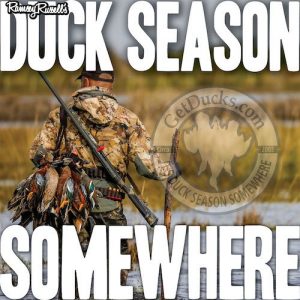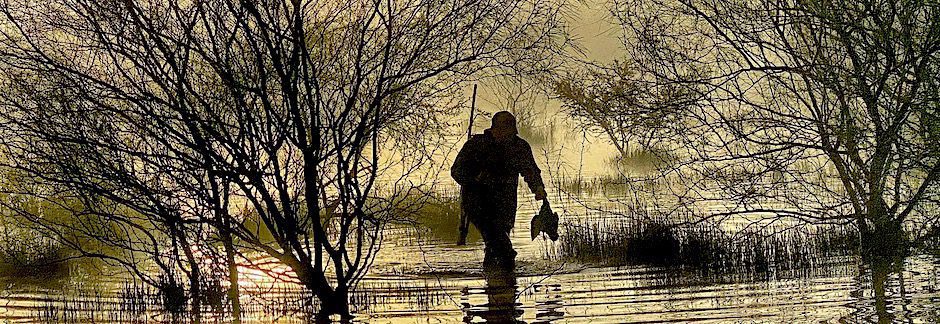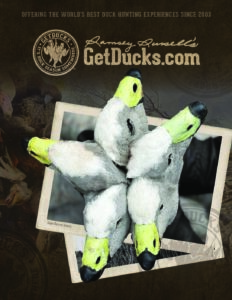MOJO’S Duck Season Somewhere Podcast
EP 548. Managing Waterfowl Across the Pond

“Because the ducks aren’t going to let you [overharvest them],” replied Mike Swan matter of factly when asked how there could still possibly be healthy waterfowl populations in the United Kingdom. The UK is not quite twice the size of Mississippi, bag limits and shooting hours are nonexistent, baiting is allowable, and anything with a bore diameter less than 2 inches is considered a shotgun–yes, they can still shoot 2-, 4-, and 8-gauge shotguns, and even punt gunning is still practiced by a few die hards. What’s it like hunting here? A long-time biologist for Game and Wildlife Conservation Trust, Swan vividly describes his lifetime hunting and managing waterfowl in a landscape that was completely tamed a very long time ago. And how has duck hunting changed in the decades since he first started hunting? While his sobering answer is surprising, the entire discussion somewhat challenges “the sky is falling” narratives here on our own side of the pond where we are benefactors of an envy-of-the-world North American Model.
EP 547. Oak Grove Hunting Club, Louisiana

Following an eventful morning duck hunt in the Louisiana marsh, Ramsey joins General Manager, Mike Baccigalopi and General Manager, Fred Stewart, to discuss their experiences at Oak Grove Hunting Club, that was founded in 1932. They provide interesting insights into the historic club, duck hunting and local culture in their little corner of Louisiana.
EP 546. A Lifetime Hunting Virginia’s Eastern Shore

Chicoteague, Virginia’s outgoing mayor, Arthur Leonard is a lifelong duck hunter and decoy carver that recalls his family being among the first to inhabit the little island along Virginia’s Eastern Shore, where he grew up plying nearby water for fishes and waterfowl. He takes us on a tour of his storied back yard, discussing island life, duck hunting species, tides, boats, decoys, carving, wild horses, sika deer, changes and much more.
EP 545. The Rifle Project

For combat veteran Andrew Biggio, who’s now on the Boston Police force, a relative’s hand-written letter from the WWII Pacific battlefield compelled him down an interesting life path. He’s collected WWII combat stories from over 500 veterans as told through a M1 Rifle. Through book proceeds and donations, the Rifle Project has returned with over 50 Veterans back to their former battlefields in France, Germany, Belgium, Italy, Luxembourg, and the Netherlands at no cost to the veteran or their family. Biggio shares some great insights and talks in-depth about the Rifle Project and America’s Greatest Generation.
Related links:
EP 544. A Classical Decoy Carving Family Tradition

Following a duck hunt along Virginia’s Eastern Shore, Ramsey meets with father-son carvers, Ian and Mark McNair, who are committed to crafting wooden waterfowl decoys using only traditional hand tools and methods. More than simply turning out beautiful decoys, their decoy carving story is about a classical approach to duck hunting as well as to life.
EP 543. Decoys Made with “Never Settle” Determination

With legions of die-hard customers, Dave Smith Decoys have long been regarded as the most realistic and utterly effective decoys available. But who is the man behind these legendary craft decoys, and what does his functional art say about him as a hunter and a human being? You’d have to figure him a serious goose hunter if nothing else. Legendary decoy maker Dave Smith describes growing up hunting and trapping in Oregon, artistic influences, starting a decoy company, and more. We get deep into the many various goose species hunted in Oregon, why regular ol’ honker decoys aren’t effective in luring various species, hunting techniques, leg bands and neck collars, new DSD duck decoys, turkey decoys, what makes his DSD best, and continually striving to be better. Really good stuff.
EP 542. They Really Hunt Coots in Louisiana?! And Much More

Roland Cortez talks about being born and raised duck hunting in South Louisiana’s marshes, his earliest influences and introductions, how and why he’s been guiding duck hunts for a very long time, and even why coots–yes coots–are among his favorite game birds as tablefare. We talk about then versus now, raising young hunters, prevalent species hunted, favored hunting techniques, hopes for the season remainder and future, and much more. Ramsey even adds “attend coot round up with Roland Cortez” to his bucket list!
EP 541. Wild Goose Jack Miner Goes Mainstream

Jack Miner Bible-verse-inscribed leg bands have long been revered as holy grail momentos among in-the-know waterfowl hunters. Formed in 1904 by a former fur trapper and market hunter, the Jack Miner Migratory Bird Sanctuary once garnered international attention and was Canada’s foremost tourist attraction, connecting legions of both hunters and non-hunters to wild geese and ducks. But times change. Public interests shift. Now in a time where habitat loss is unprecedented, where hunter participation increasingly dwindles, and a more urbanized humanity is disengaged from their wild surroundings, Jack Miner’s legacy seems more important than ever before. Collaborating with 50 Ducks’ streaming migration technology, they’re on an “education is conservation” mission to turn the tide. And need your help. Tune in to learn more about Jack Miner’s past, present and future and how you can join them meaningfully in renewed waterfowl conservation efforts.
*****
Related Info:
Visit https://50ducks.com/signup/ and use the code GETDUCKS for 10% off your subscription.
EP 540. The Chesapeake Bay Legends

Saying that museums tell stories, Chesapeake Bay historian and preservationist, C. John Sullivan, takes us on a personal tour of one of the largest private collections amassed, where each artifact represents one of the most storied time periods in American waterfowling history. After a brief visit–where I actually shouldered a 22-pound, 4-gauge, side-by-side blackpowder shotgun–we talk about giant guns, specialized hunting tools, market hunter techniques, wooden decoys, famous carvers, and a completely bygone, but not yet forgotten, way of life on the fabled Chesapeake Bay.
EP 539. West Virginia Duck Hunt

“Almost Heaven, West Virginia, Blue Ridge Mountains, Shenandoah River,” go the John Denver lyrics. The iconic song never mentions ducks or duck hunting. For good reason. Because they’re few and far between, but not impossible. State 48 was a huge, successful adventure thanks to friend Mike Smith. Following a couple eventful days duck hunting West Virginia, we crack open a couple Busch Lights, recall the weeks events, talk about his growing up and duck hunting in this off-the-beaten-flyway part of Appalachia.








